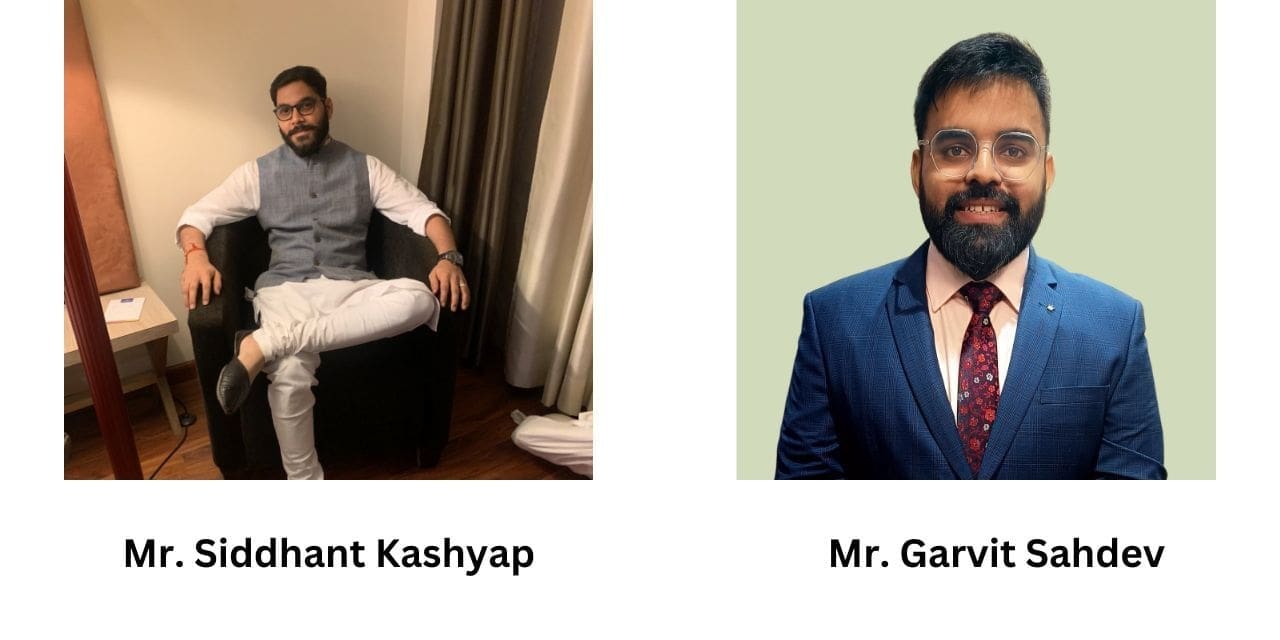With the growing textile waste problem around the world, some companies are inventing new ways to tackle this global issue, One such company InfiniteX is providing the solution to tackle this problem by providing a way for brands to give more benefits and better service to its customers and a way for people to discard their old clothes in a good way. Textile Value Chain talked with its co-founders Mr. Garvit Sahdev and Mr. Siddhant Kashyap in an exclusive interview.
Can you start by talking about your company, InfinteX, and its journey from the beginning?
Garvit Sahdev and Siddhant Kashyap were introduced to the term circular economy in 2019 in a classroom discussion. Later on, they did their research on ‘Implications of Circular Economy on Indian Textile Industry’ to understand the challenges faced by value chain players in moving towards a circular fashion economy. The idea of Infinite X was born when they were writing the thesis of their research.
From 2020 to 2021, they did multiple pilots to gain deeper insights around problems faced by fashion brands/retailers, consumers and recyclers. In early 2022, they raised their first investment to start building the Closed Loop System. This system has inputs from their years of research and insights from on ground pilots.
As your company’s major focus is on Circularity, according to you, what is circularity?
Linear economy extracts new resources from the planet Earth, makes products out of them and then post usage dump them back as waste. Circular economy talks about continuous usage of materials in their highest value form thus reducing the extraction of new resources and generation of waste.
Your business model is relatively new. To understand how your company works, can you explain the process and how brands can benefit from your ‘profitable circularity idea’?
Our closed-loop system is built on three pillars. First is unique physical IDs and digital product passports for each product. Second is PAN India’s reverse logistics network and the third is an ecosystem of circularity partners like recyclers, resellers, NGOs, etc.
Brand/retailer attaches unique physical IDs to their products, fills in the relevant information in the digital product passport and sells their products across channels. Post usage, customers scan/tap the physical IDs attached to products to see the available information and raise requests for reselling, donation, recycling, etc. We fulfil these requests by picking up the product from the doorstep and routing them to circularity partners based on the proximity principle and the condition of the product.
Brands can enhance their brand value with circularity. They can embed their brand story in each product. They can launch their own reselling program. And they can get repeat customers by incentivising them at the time when they discard their old clothing in the form of reselling, donation, recycling, etc.
As for the consumer’s point of view, what are the benefits they will get if they participate in your circularity model?
Customers can experience the authentic brand story behind each product. They can access and engage with the brand’s digital assets like websites and social media channels. They can re-sell, donate, and recycle with a single click from their doorstep and earn rewards.
In India and the world, Textile waste is a growing problem and as we can see you are clearly helping to reduce the waste, however, what is your solution to the access inventory in your reverse logistics network?
Our ecosystem of circularity partners have facilities where access inventory of any grade can be processed.
When you talk about reverse logistics, which areas are currently accessible through your network?
We have PAN India reverse logistics network.
What NGOs and charitable organisations are currently working with you?
We have just started and a few prominent names are Khwaahish Foundation, Blessing Foundation, etc.
Q8: In terms of more brand onboarding and expanding your logistic network, what is your expansion or growth strategy?
We are following a conventional B2B growth strategy of reaching out to prospective partners and partnering with them.
Last but not least, how can brands and NGOs who wish to be part of your network onboard with your company?
We have a very simple onboarding process for brands and NGOs. They can reach out to us at info@infinitex.in

